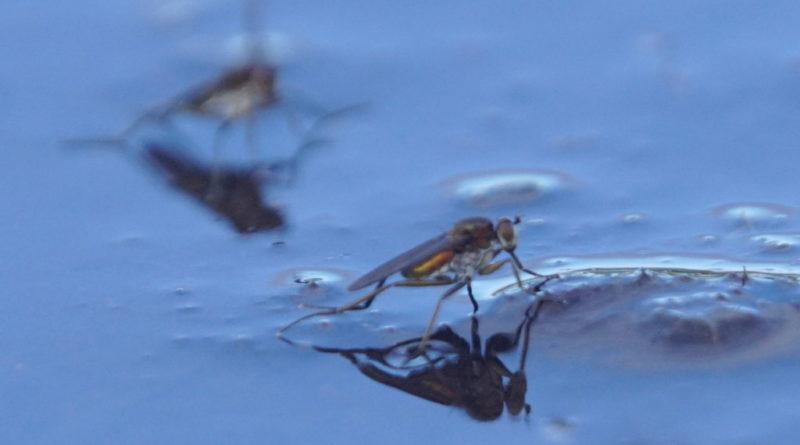New Robot Flies, Dives, Swims, Propels Itself Out of Water & Safely Lands
Researchers at the engineering and applied sciences at Harvard and Wyss Institute Harvard have developed a microrobot that can fly, dive into the water, swim, propel itself out of the water and safely land.
While there are animals that can easily traverse on air, water and land, tiny creatures such as insects cannot navigate these three different environments. In the past, millimeter-scale robots or microrobots could not easily traverse on air, water and land.
Researchers at Harvard University was able to demonstrate in the paper entitled “A biologically inspired, flapping-wing, hybrid aerial-aquatic microrobot” published in the Science Robotics journal that a 175-milligram robot dubbed as “RoboBee” can easily traverse three environments: air, water and land.
“This is the first microrobot capable of repeatedly moving in and through complex environments,” Yufeng Chen, first author of the paper, said in a statement. “We designed new mechanisms that allow the vehicle to directly transition from water to air, something that is beyond what nature can achieve in the insect world.”
Harvard’s 175-milligram microrobot can easily navigate air, water and land by uncovering the right combination of wing size and flapping rate – at 220 to 300 hertz on air and nine to 13 hertz in water.
The researchers also solve the difficulty of a tiny object to propel itself out of the water by fitting the microrobot with four buoyant outriggers – basically floaties, a central gas collection chamber and a sparker inside the chamber.
Once the microrobot swims to the surface, an electrolytic plate in the robot’s central gas chamber converts water into oxyhydrogen – a combustible gas fuel. The sparker inside the chamber then ignites the gas fuel to propel the robot out of the water. Once on air, RoboBee passively stabilizes so that it always lands on its feet.
By being able to traverse across land, water and air, researchers said that this microrobot could be used in search and rescue missions, research studies and environmental monitoring.
According to SEAS, the Harvard Office of Technology Development has filed a patent application for RoboBee.
